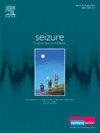20号环形染色体患者对迷走神经刺激的反应
IF 2.8
3区 医学
Q2 CLINICAL NEUROLOGY
引用次数: 0
摘要
20号染色体缺失是一种罕见的遗传综合征,以癫痫、智力残疾和其他神经发育异常为特征。20号环染色体的癫痫发作通常具有耐药性,使人虚弱。对于耐药癫痫患者,通常考虑非医疗选择;然而,这些干预措施的效果尚不清楚。在这个回顾性的病例系列中,我们研究了迷走神经刺激对20号环状染色体患者的效用。方法在患者支持小组的协助下,从我们的研究/临床数据库中确定患者。通过电话或视频电话会议对患者和/或护理人员进行访谈。收集的数据包括人口统计、癫痫特征以及对医疗和非医疗治疗(包括迷走神经刺激)的反应。结果14例患者纳入研究。11/14例报告迷走神经刺激器植入后癫痫有所改善,其中5例癫痫发作频率减少,3例癫痫发作持续时间缩短,3例非惊厥性癫痫持续状态或特定癫痫类型减少或消除,2例对抢救药物的需求减少,2例癫痫发作后体征/症状缩短。据报道,两名患者的认知功能有所改善,一名患者的攻击行为有所减少。结论迷走神经刺激是治疗20环染色体耐药癫痫的有效方法。本文章由计算机程序翻译,如有差异,请以英文原文为准。
Response to vagus nerve stimulation in people with ring chromosome 20
Purpose
Ring chromosome 20 is a rare genetic syndrome characterized by epilepsy, intellectual disability, and other neurodevelopmental abnormalities. Seizures in ring chromosome 20 are often drug-resistant and debilitating. For patients with drug-resistant epilepsy, non-medical options are often considered; however, the efficacy of these interventions is not well-understood. In this retrospective case series, we investigated the utility of vagus nerve stimulation in people with ring chromosome 20.
Methods
Patients were identified from our research/clinical databases, and with the assistance of a patient support group. Patients and/or caregivers were interviewed by phone or video teleconference. Data collected included demographics, epilepsy characteristics, and response to medical and non-medical treatments, including vagus nerve stimulation.
Results
Fourteen patients were included in the study. 11/14 reported some improvement in epilepsy following vagus nerve stimulator implantation, including five with reduced seizure frequency, three with shorter seizure duration, three with reduction or elimination of non-convulsive status epilepticus or specific seizure types, two with reduced need for rescue medication, and two shorter post-ictal signs/symptoms. Two patients were reported to have improved cognitive function and one a reduction in aggressive behaviour.
Conclusion
Overall, vagus nerve stimulation appears to be an effective treatment for some patients with ring chromosome 20 and drug-resistant epilepsy.
求助全文
通过发布文献求助,成功后即可免费获取论文全文。
去求助
来源期刊

Seizure-European Journal of Epilepsy
医学-临床神经学
CiteScore
5.60
自引率
6.70%
发文量
231
审稿时长
34 days
期刊介绍:
Seizure - European Journal of Epilepsy is an international journal owned by Epilepsy Action (the largest member led epilepsy organisation in the UK). It provides a forum for papers on all topics related to epilepsy and seizure disorders.
 求助内容:
求助内容: 应助结果提醒方式:
应助结果提醒方式:


